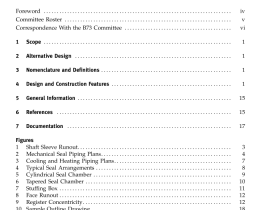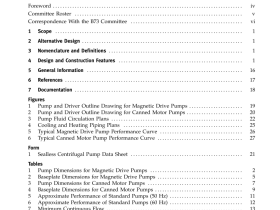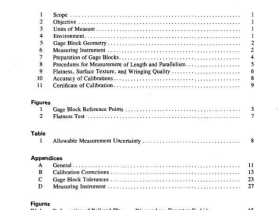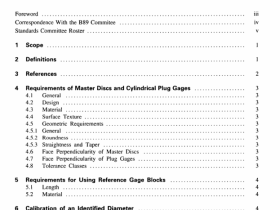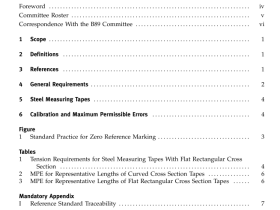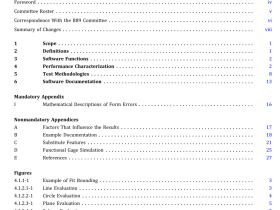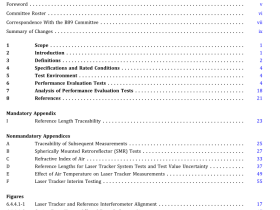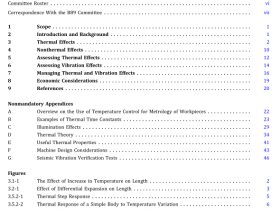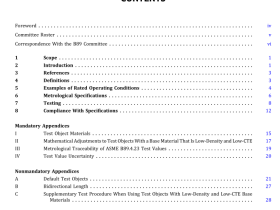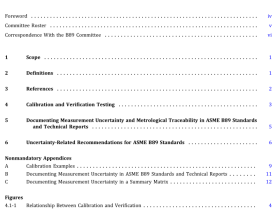ASME MFC-16 pdf download
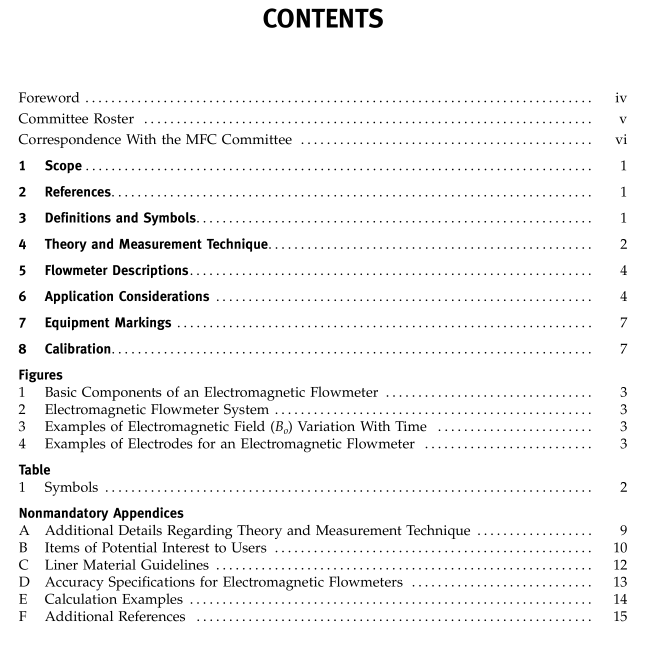
ASME MFC-16 pdf download Measurement of Liquid Flow in Closed Conduits With Electromagnetic Flowmeters
SCOPE1
This Standard is applicable to industrial electromagnetic flowmeters and their application in the measurement of liquid flow. The electromagnetic flowmeterscovered by this Standard utilize an alternating electricalcurrent (AC) or pulsed direct-current (pulsed-DC) togenerate a magnetic field in electrically conductive andelectrically-homogeneous liquids or slurries flowing ina completely filled, closed conduit.
This Standard specifically does not cover insertion-type electromagnetic flowmeters, meters used to measure flow in partially filled pipe, or those used in surgical,therapeutic,or other health and medicalapplications.It also does not cover applications of industrial flowmeters involving nonconductive liquids orhighly conductive liquids (e.g., liquid metals).
2 REFERENCES
All references are to the latest published edition ofthese standards. The following is a list of publicationsreferenced in this Standard.
ASME B16 Series,Standards for Valves,FittingsFlanges,and GasketsASME MFC-1M,Glossary of Terms Used in theMeasurement of Fluid Flow in PipesPublisher: The American Society of MechanicalEngineers (ASME),Three Park Avenue.New YorkNY 10016-5990;Order Department: 22 Law DrivePO.Box 2300,Fairfield,NJ 07007-2300
ISO 13359, Measurement of Conductive Liquid Flow inClosed Conduits – Flanged ElectromagneticFlowmeters – Overall LengthPublisher: International Organization for Standardization (ISO), 1, ch. de la Voie-Creuse, Case postale 56CH-1211,Geneve 20, Switzerland/Suisse
3 DEFINITIONS AND SYMBOLS
(a) Paragraph 3.1 lists definitions from ASMEMFC-1M used in ASME MFC-16.(b) Paragraph 3.2 lists definitions specific to thisStandard.
(c) Paragraph 3.3 lists symbols used in this Standard(see Table 1).
3.1 Definitions From ASME MFC-1M
accuracy: the degree of freedom from error; the degreeof conformity of the indicated value to the true valueof the measured quantity.
precision: the closeness of agreement between the resultsobtained by applying the experimental procedure several times under prescribed conditions. The smaller therandom part of the experimental errors that affect theresults, the more precise is the procedure.rangeability (turndown): flowmeter rangeability is theratio of the maximum to minimum flow rates or Reyn-olds number in the range over which the meter meetsa specified uncertainty (accuracy).
repeatabilifi: the closeness of agreement among a seriesof results obtained with the same method on identicalest material.under the same conditions (same operatorsame apparatus, same laboratory, and short intervals oftime).
uncertainty (of measurement): the range within which thetrue value of the measured quantity can be expected tolie with a specified probability and confidence level.
32 Definitions for ASME MFC-16
bias: the systematic errors (i.e., those that cannot bereduced by increasing the number of measurementstaken under fixed flow conditions).
flowmeter primaru: includes the flowtube process connections, electromagnetic coils, and electrodes. Flowmeterprimary is also known by other names such as: flow-meter primary device, primary device, primary etc.
floumeter secondary: includes the electronic transmitter.measurement of the emf, and in most cases the powerfor the electromagnet coils of the flowmeter primary.linearity: linearity refers to the constancy of the meterfactor over a specified range, defined by either the pipeReynolds number or the flow rate.
meter factor: the number, determined by liquid calibra-tion, that enables the output flow signal to be relatedto the volumetric flow rate under defined reference con-ditions.
3.3 Symbols
Table 1.See
